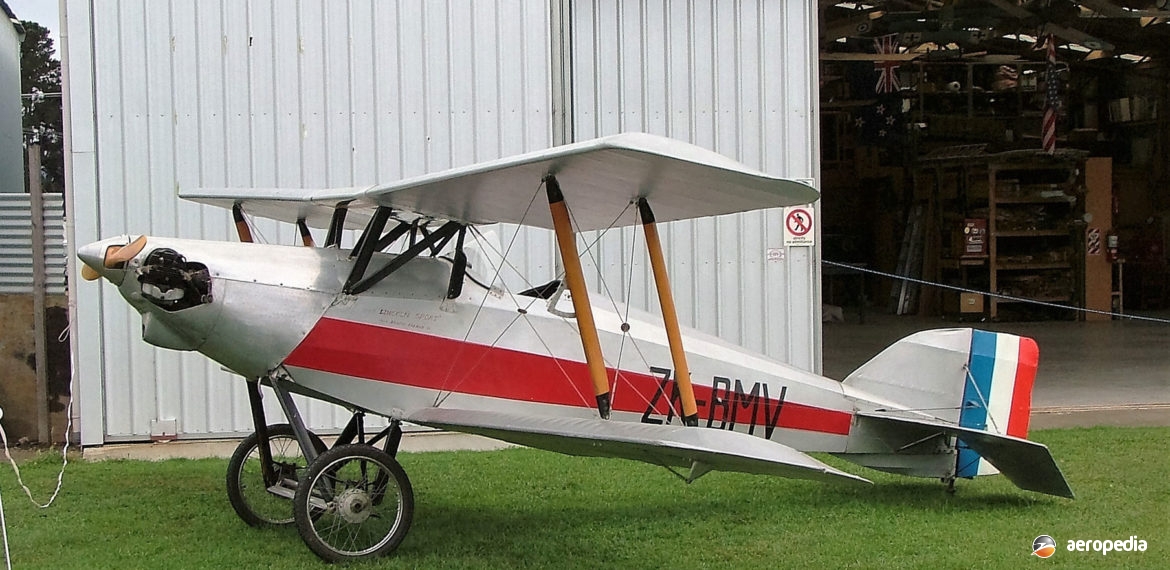Photograph:
Lincoln Sports ZK-BMV at Omaka, NZ (David C Eyre)
Country of origin:
United States of America
Description:
Single-seat light sporting biplane
Power Plant:
One 26 kw (35 hp) four-cylinder converted motor-cycle engine
Specifications:
- Wingspan: 6.1 m (20 ft)
- Length: 5.25 m (17 ft 3 in)
- Height: 1.98 m (6 ft 6 in)
- Wing area: 10.03 m² (108 sq ft)
- Max speed: 145 to 161 km/h (90 to 100 mph)
- Cruising speed: 121 km/h (75 mph)
- Rate of climb: 144 m/min (800 ft/min)
- Ceiling: 4,877 m (16,000 ft)
- Range: 402 km (250 miles)
- Empty weight (with full oil tank and half fuel load): 181.4 kg (400 lb)
History:
The Lincoln Sports light biplane for amateur construction was designed in the USA in the 1920s by Mr S Swanson of Vermillion, North Dakota. In that era it was one of the most commonly built aircraft of its type. A small number were built in New Zealand, and two of these had quite long and chequered careers. One, c/n 1, built to Lincoln Sports plans by Mr A Radford in 1932, was fitted with a three-cylinder radial engine of Mr Radford’s own design. The engine ran well and provided the necessary power required. When the aircraft was nearing completion, the owner was severely injured in a motor accident which left him crippled and subsequently Mr L Findlay took over construction. Some time after the aircraft became known as the Lincoln-Findlay Sports.
In 1940 it was taken to Milson Airport for flight tests, with a damaged but reshaped DH Moth Propeller being used initially. On 21 September 1940 the first flight was made by David (Darby) West. Subsequently testing revealed the aircraft had pleasant handling characteristics, sensitive controls, and excellent stability. However, after 2½ hours flying a connecting rod broke in flight and the engine was completely wrecked. However, a safe landing was achieved.
A two-cylinder 30 kw (40 hp) Bristol Cherub engine was then located and fitted, entailing the installation of new engine bearers, etc. However, further problems arose. A new propeller had to be fitted, the carburettor caused problems, and the magneto proved to be unreliable. Ignition problems led to the engine cutting out on one flight, causing the aircraft to crash. Tightening regulations prevented the reconstruction of this aircraft for many years until 1959 when it was taken to Wanganui and restored, becoming ZK-BMV. It was rebuilt during 2014 to airworthiness and flown regularly fitted with the Bristol Cherub engine.
One other example of the type is known to have been built by Ronald Kirkup (also c/n 1) and it became ZK-ADV. Although built to Lincoln Sports plans, it was registered in 1935 as a Tui Sports, having been painted to resemble a World War I fighter, and named “Tui”. However, it only survived to 29 August 1941 when it was destroyed in a crash on Ohope Beach. Eventually a replica was built fitted with a Szekely radial engine and this has been placed on display at MOTAT in Auckland.

